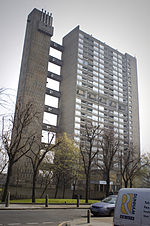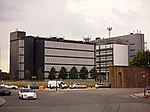Aberfeldy Village
Areas of LondonDistricts of the London Borough of Tower HamletsHousing estates in the London Borough of Tower HamletsPlaces formerly in MiddlesexUse British English from June 2019

Aberfeldy Village is an urban village in a part of Poplar that was once part of Bromley in London, England, which is in the process of being redeveloped in a joint venture between Poplar HARCA and Willmott Dixon. It was known as the Aberfeldy Estate, a housing estate but has expanded into a new urban village. It is sometimes referred to as Aberfeldy New Village in planning documents.
Excerpt from the Wikipedia article Aberfeldy Village (License: CC BY-SA 3.0, Authors, Images).Aberfeldy Village
Brion Place, London Poplar
Geographical coordinates (GPS) Address Nearby Places Show on map
Geographical coordinates (GPS)
| Latitude | Longitude |
|---|---|
| N 51.513 ° | E -0.006 ° |
Address
Brion Place 3
E14 0SP London, Poplar
England, United Kingdom
Open on Google Maps








